Ahead of International Tiger Day on 29th July, our ecologist Yatish Lele highlights TERI's efforts to measure the value of ecosystem services in the Dudhwa Tiger Reserve in Uttar Pradesh, reducing human-wildlife conflict in protected areas of India, and public awareness towards wildlife conservation.
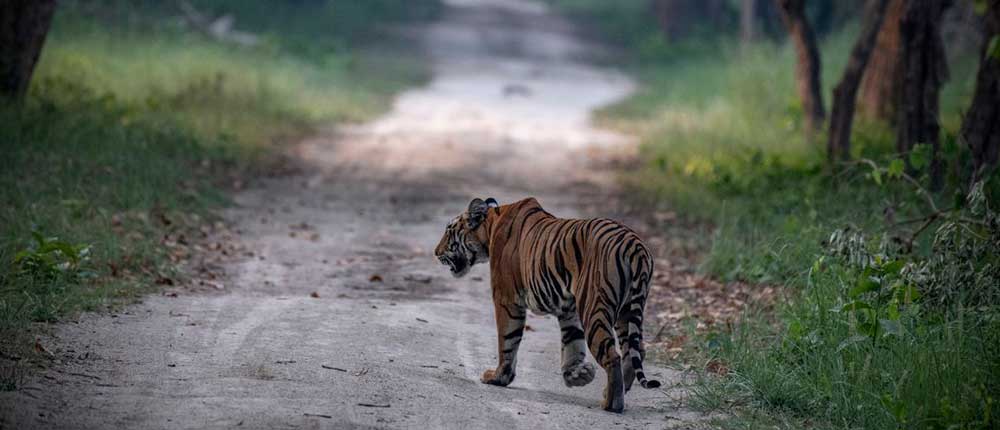
From the Himalayan foothills to the Nilgiri Biosphere Reserve, tigers have dominated the forests of India for several centuries. Recognised as India's national animal, the big cat is worshipped as well as feared by the local communities and several folktales are associated with it. Rampant hunting and poaching, the loss of habitat, fragmentation, and incidents of human-wildlife conflict (HWC) led to a drastic decline in the population of tigers in India to only 1411 as per the 2006 census. Several initiatives were undertaken by various governmental and non-governmental stakeholders that led to an increase in the population of tigers to 2967 in 2018. This success was celebrated globally. Today, HWC is one of the key threats to tigers in India. There are 50 tiger reserves in India, spread across in 18 states and covering a total area of 71,027.10 square kilometres. Tiger reserves, in addition to providing conservation and habitat for wild animals also provide several ecosystem services such as biodiversity conservation, carbon sequestration, air and water purification, pollination, fuelwood and fodder, soil conservation, and so on.
In India, around 50 million people stay in and around tiger reserves and that population is largely dependent on forest resources for the collection of a variety of non-timber forest produce (NTFP) and the collection of fuelwood and fodder for subsistence and livelihood purposes. This dependence has resulted in human-wildlife conflicts throughout the country as wildlife occasionally ventures in the human landscapes in search of food, water and habitat causing damage to crops, infrastructure, and human life.
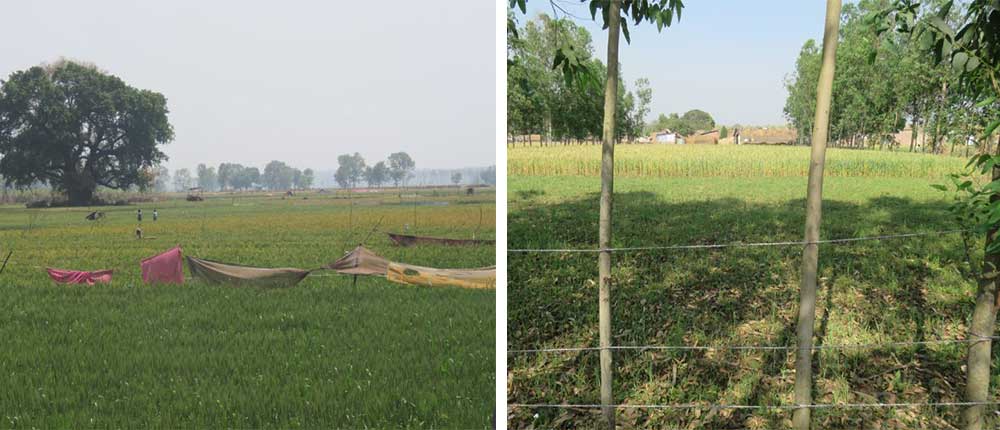
To address these costs and mitigate the conflicts, the Government of India (GoI) has implemented various mechanisms such as financial compensation, relocation of villages, and physical HWC mitigation infrastructure. The options available for addressing human-wildlife conflicts are heavily centralized and the process is very tedious for a local villager or farmer to follow. Also, the mitigating measures, especially the infrastructure measures (physical barriers), electronic devices, insurance schemes, translocation of animals, and alternate livelihood activities for the communities are finance-intensive activities. These activities need to be managed in a continuous timely manner and thus require a continuous financial mechanism. In many of the states, lack of resources to compensate for the loss of the communities is a big challenge as it leads to boosting of anti-government and wildlife sentiments, resulting in substantial eradication of wildlife.
There was a dire need to have a mechanism that could help support additional finance in a timely manner to mitigate this pressing issue of HWC. In such a case, obtaining finance through carbon-related projects could be an important solution to address the issue of financial crunch. Mechanisms such as Climate, Community & Biodiversity (CCB) Standards support such land-use projects in addressing climate change, engaging positively with local communities and smallholders, and conserving biodiversity. This makes it an ideal mechanism that can help generate supplementary finance. The only hitch is that this mechanism fails to differentiate between the prices of Verified Emission Reductions (VERs) generated in the voluntary market from carbon-based and ecosystem services based activities. Hence it is necessary to develop an index to standardise the contribution of co-benefits of biodiversity conservation and livelihood enhancement in tiger reserves of India.
With this background, TERI created a project on developing an index to standardise the contribution of co-benefits of biodiversity conservation and livelihood enhancement in tiger reserves of India. The pilot project was implemented in the Dudhwa Tiger Reserve (DTR) in Uttar Pradesh. The key deliverables of the project were (i) Assessment of carbon stock for Woodlands, Grasslands and Wetlands in Dudhwa Tiger Reserve and projection of future potential of carbon finance (ii) Evolving methodology for measuring carbon stock of the wetlands (iii) Capacity building of forest personnel of Dudhwa Tiger Reserve on the assessment of carbon stock by conducting stakeholder consultation workshop (iv)Addressing the issue of HWC through livelihood enhancement strategies (v) Developing an index to standardize the contribution of co-benefits of biodiversity conservation based on CCBA index.
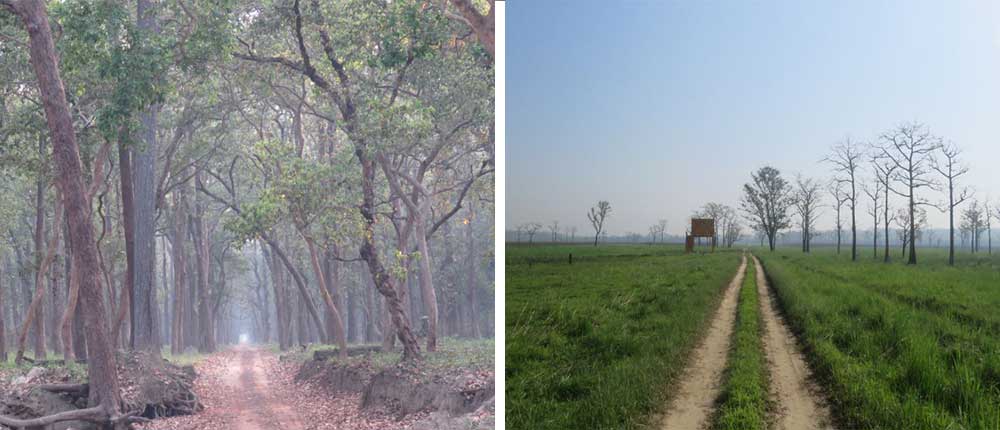
In the case of woodlands, the carbon stock values for all five carbon pools - Above Ground Biomass (AGB), Below Ground Biomass (BGB), Deadwood (DW), Litter and Soil Organic Carbon (SOC) were calculated. The carbon stock for all five pools of the woodland ecosystem was calculated to be 67.55 million tonnes. For grasslands, the carbon stock was calculated for above-ground biomass, below-ground biomass and soil organic carbon. The total carbon stock was calculated to be 4.75 million tonnes. The carbon stock for wetlands in Dudhwa was calculated to be 15.32 million tonnes. The total carbon stock of DTR was calculated to be 87.61 million tonnes.
Though the importance of wetlands in global carbon budgets is well known, there is a lack of systematic studies, models and methods which has led to the underestimation of their relevance regional levels, to the point that they are typically omitted from large-scale assessments. Hence it was necessary to develop a protocol to estimate the carbon stock present in the wetlands. The proposed methodology for the estimation of wetland carbon was (i) Delineation of boundary of the study area (ii) Identification of carbon pools; the possible ‘carbon pools' that came out from literature survey and which should be considered as eligible carbon sinks- (1) Plant Biomass (PB), (2) Soil, and (3) Water. (iii) Field measurements and data collection which include soil analysis, water analysis and vegetation analysis. The method for vegetation and soil analysis could be the same as used for woodlands.
The capacity building workshop for frontline staff of Dudhwa Tiger Reserve on “Carbon Stock Assessment of Forest Ecosystem” was designed to provide hands-on training for conducting the measurements of five pools of carbon for the estimation of carbon stocks present in the forest.
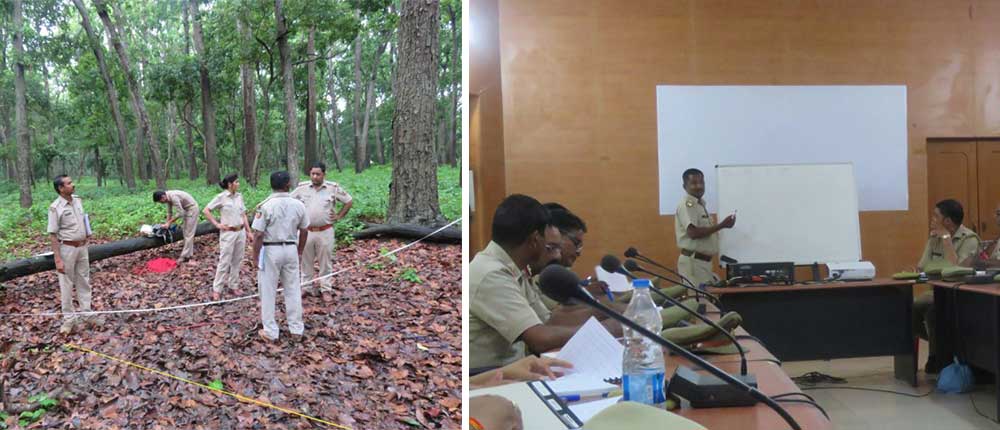
In order to understand the situation of human-wildlife conflict in the area, data was collected from Focus Group Discussions and Household Surveys from 13 conflict-prone villages of DTR landscape i.e. Bardiya, Bisunapur, Fakirpuri, Narang (Salavat Nagar), Korriyani, Matehi, Nishan Gara, Karikot, Rampurwa, Chaltua, Ellenganj, Kishanpur and Sehramau.
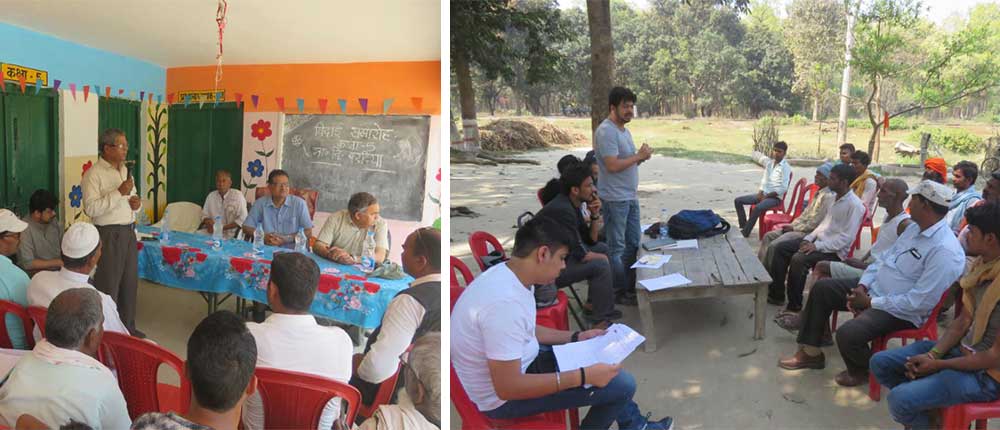
Some of the key findings of the study were (i) Crop raiding was the problem for almost all the selected villages due to the proximity of the agricultural fields adjacent to the border of NP. Wild Pig (95.45%) and Nilgai (92.42%) were reported by the respondents to cause maximum damages to crops. (ii) About 29% of households don't have electricity, 22% don't have bathroom facilities and almost 78% stay in semi-pucca houses. (iii) Around 97% of the households collect fuelwood, 76% collect fodder, 80% collect NTFPs, and about 70% of the households are involved in cattle grazing activities inside forests. Due to the infrastructure limitations and high dependence on forest, injuries and deaths due to leopards and tigers were reported.
The current mitigation strategies adopted by the people to prevent HWC are guarding fields at night, installing electric fencing, use of crackers or fire-bombs to create noise, sticks, community patrolling, use of colorful films, old colorful sarees, red & green LED bulbs to deter wild animals, scarecrows & local wind chimes to deter birds and other animals. The current mitigation strategies except electric fencing were reported to be failing in controlling HWC. However, they are costly and difficult to maintain and are not affordable as reported by the communities. A single mitigation strategy to control the HWC situations is entirely ineffective, therefore the combination of different techniques need to be employed in DTR to reduce the risk of wildlife accustomed to any single method. For example cultivating plants like Mentha and other essential oil plants like Chamomile, lemongrass, ginger, etc. have been reported to prove to be very useful in providing compensation to the farmers who experience loss of crops through crop-raiding. However, their market rates fluctuate a lot each year.
Some of the key strategies and recommendations to reduce the issue of conflict are:
- Alternative options for cooking energy like improved cookstoves, biogas, and LPG are needed. LPG can be provided through convergence with ongoing Govt. schemes like Ujjwala.
- Primary Response Teams/Anti-Depredation Squads already exist in some villages,
- Streamlining of the official procedure for payment of ex-gratia relief to the victims of HWC to ensure that the relief is disbursed immediately with minimal paperwork and hindrances,
- Initiate pilot livestock and crop insurance schemes through agriculture and animal husbandry department to not only reduce human-wildlife conflict but also for sustainable management of agro-biodiversity.
Low public awareness towards wildlife conservation in India is due to the lack of proper alternatives and the economic losses they incur. However, the respondents agreed to be tolerant towards wildlife as they have been for many generations if they receive some support from governments and external agencies.
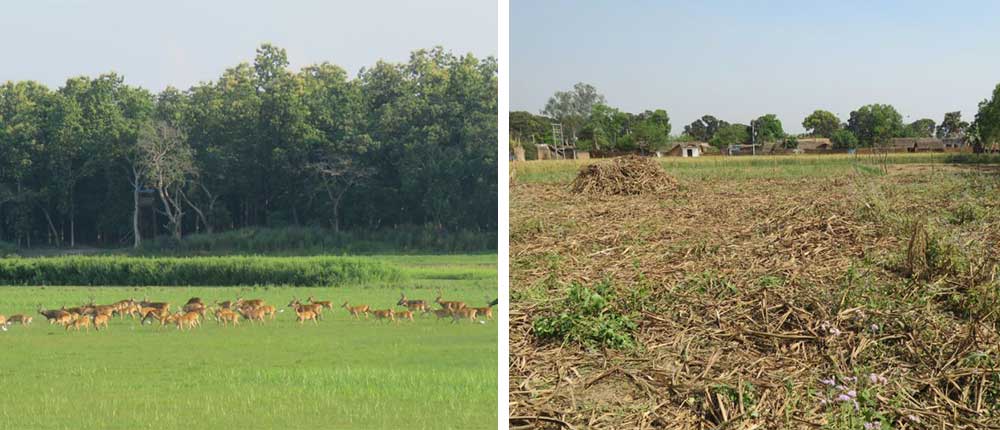
The next important step was to understand the total economic value of the ecosystem services provided by the reserve includes both direct and indirect use values consisting of provisioning, regulating and supporting services such as firewood, grazing, minor forest produce, recreation, biodiversity conservation, and carbon storage and sequestration. The total economic value of the Dudhwa Tiger Reserve was estimated to be INR 10.58 billion annually in 2019 with the highest contribution from biodiversity conservation followed by carbon sequestration services.
In order to estimate the index, the benefits arising from carbon sequestration and other ecosystem were compared. The value of carbon sequestration potential of the forests is estimated to be 1.11 billion which is 11% of the total economic value of DTR. The value arising from the other ecosystem services provided by the forests is estimated at 9.46 billion which is 89% of the total economic value of DTR. This implies that the value of ecosystem services other than carbon is 8 times greater than the value of carbon. Including these ecosystem services in the carbon finance mechanism shall yield 8 times more financial benefits as compared to the benefits of carbon. The additional finance generated through the carbon project should be directly transferred through the forest department to the local communities which would be used on community development and biodiversity conservation activities.
This aspect of ecosystem services needs to be well integrated into the climate policy of India and carbon neutrality policy is the only way forward. As discussed in the earlier sections, the issue of human-wildlife conflict is prevalent in most of the tiger reserves, this policy approach shall help bridge the gap of the timely financial requirements to mitigate human-wildlife conflict and ensure community participation in biodiversity conservation by involving the local communities. At the same time, capacity building and awareness generation of the forest staff is must related to the development of Project Design Document (PDD) and monitoring report for the voluntary carbon market.
In a nutshell, the Government of India must strike a balance between the ecological needs of the country and people suffering damage due to wildlife. This would fulfil our larger picture of wildlife conservation in India, especially the majestic Big Cat roaring again - imagine how wonderful that would be!
